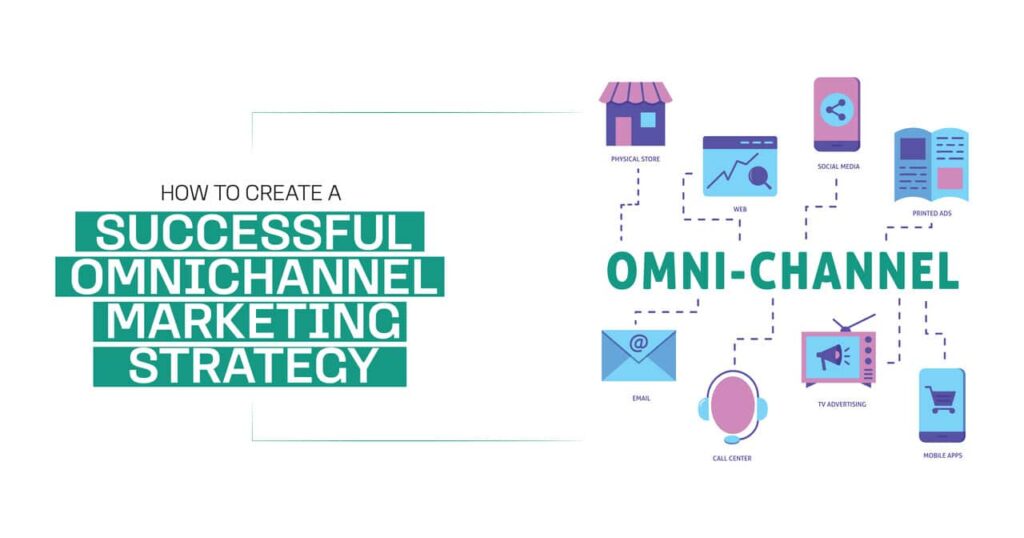In today’s fast-paced, digital-first world, marketing is no longer just about having a presence on multiple platforms. It’s about creating a seamless experience across all channels—online, in-store, email, or social media.
Essential Takeaways
- Unified Customer Data: Consolidate customer data across all channels to understand behavior and personalize experiences. This integration is key to delivering a consistent and relevant marketing approach.
- Consistent Brand Messaging: Ensure your brand’s messaging, tone, and visuals are uniform across all platforms. Consistency builds trust and strengthens your brand’s identity.
- Cross-Channel Integration: Connect your marketing channels so that customer interactions are seamless and integrated. This approach improves the overall customer experience and drives better results.
This is where omnichannel marketing comes into play. With the right omnichannel marketing strategy, you can connect with your customer base wherever they are, offering a unified experience that builds trust and engagement, ultimately driving conversion rates. Let’s explore how to create an omnichannel marketing strategy that works.
What is Omnichannel Marketing?
Omnichannel marketing is about integrating all your marketing channels to create a consistent brand experience for customers, regardless of how they interact with your business. It ensures that your message, tone, and service remain uniform across all customer touchpoints, whether on your website, social media platforms, physical store, mobile app, or even through customer service channels.
For example, imagine a customer browsing products on your website, adding items to their online shopping cart, and later receiving a reminder SMS message about those items. When they visit your brick-and-mortar store, they can pick up where they left off, with staff aware of their online browsing history. This seamless online and offline transition creates a positive experience, making it easier for customers to engage with your brand.
Why is Omnichannel Marketing Important?
Today’s consumers are more connected than ever, using multiple devices and platforms to interact with brands. They might research a product on their phone, add it to a cart on their desktop, and complete the purchase in-store. An omnichannel approach allows you to meet your customers where they are, providing a consistent experience across all these channels.
But why is this so important? Research shows that customers who engage with a brand across multiple channels spend more money and demonstrate greater customer loyalty. They are also more likely to recommend the brand to others. In short, omnichannel marketing isn’t just a trend—it’s necessary for modern businesses looking to thrive in a competitive marketplace.
Omnichannel vs. Multichannel: What’s the Difference?
You might wonder, what’s the difference between omnichannel and multichannel marketing? While they sound similar, the distinction lies in how the channels work together.
- Multichannel Marketing: In a multichannel approach, a brand uses multiple channels to reach customers, but these channels often operate independently. For instance, you might have a social media presence, email marketing, and a physical store, but each channel functions separately, with little integration.
- Omnichannel Marketing: On the other hand, omnichannel marketing takes things a step further by integrating all channels to create a cohesive experience. It’s about making sure that no matter how a customer interacts with your brand—whether through email, social media, or in-store—the experience feels consistent and connected.
Key Elements of a Successful Omnichannel Marketing Strategy
Unified Customer Data
The first step in building an omnichannel strategy is consolidating your customer data into one comprehensive profile. This allows you to understand customer behavior across all touchpoints, from social media interactions to in-store purchases. A 360-degree view of your customers helps in tailoring personalized messaging and recommendations.
For example, a customer might browse products on your website, check out customer reviews on social media, and make a purchase in-store later. Gathering all this data into one profile allows you to offer personalized recommendations and tailored messaging that resonates with them.
To manage customer data effectively, consider using a customer relationship management (CRM) tool to centralize data from all your marketing efforts. You can see the entire customer journey and deliver personalized, consistent experiences.
Consistent Brand Messaging
Brand consistency is critical in omnichannel marketing. Customers who interact with your brand should feel the same experience whether they’re shopping online, reading an email campaign, or visiting your store. This includes using consistent language, tone, and visual branding across all platforms.
For example, if your online store promotes a specific sale, ensure the same offer is available in your physical stores and promoted on social media. The messaging should feel familiar and cohesive, helping to build trust and brand recognition.
Cross-Channel Integration
Your marketing channels need to work together to provide a seamless experience. This requires integrating all your platforms so that data and customer information flow freely.
For instance, if customers abandon their online shopping cart, they might receive an email reminder about the items. Later, when they visit your store, your sales staff can access the same information and offer personalized assistance. Cross-channel integration helps eliminate communication gaps and creates a smoother customer journey.
Personalization at Every Touchpoint
Today’s consumers expect personalized experiences. They don’t want to be bombarded with generic ads and irrelevant offers. Instead, they want marketing messages that speak directly to their needs and preferences.
By leveraging customer data, you can personalize your marketing across all touchpoints. This might include sending tailored email recommendations, offering personalized discounts in-store, or showing relevant ads based on a customer’s browsing history. The more personalized your interactions, the more likely customers will engage with your brand.
Steps to Building an Omnichannel Marketing Strategy
Step 1: Understand Your Audience
Understanding your audience is the foundation of any omnichannel strategy. Gather data on your customers’ preferences, behaviors, and pain points. Use analytics tools, customer surveys, and feedback forms to get a complete picture of who your customers are and what they need.
For example, which marketing channels do they use the most? Are they more likely to shop in-store or online? Do they prefer email communication or social media engagement? By understanding these details, you can tailor your strategy to meet your audience where they are.
Step 2: Map the Customer Journey
Once you clearly understand your audience, map out their customer journey. Identify the key touchpoints where customers interact with your brand, from discovery to purchase and post-sale engagement. Understanding the entire customer journey is essential for optimizing your marketing funnel and ensuring customer satisfaction.
For example, a customer might first discover your brand through social media platforms, then visit your website to learn more about your products. They might sign up for your email newsletter, receive a discount code, and later make a purchase in-store. By mapping out this journey, you can identify opportunities to enhance the experience at each stage.
Step 3: Choose the Right Channels
Not all channels are created equal. The key to a successful omnichannel marketing strategy is choosing the right platforms for your audience.
For example, if you’re targeting millennials, you might focus more on social media channels and mobile optimization. Email marketing and in-store experiences might be more effective if your audience skews older. The goal is to prioritize the channels that align with your audience’s preferences and needs.
Step 4: Integrate Your Channels
Once you’ve identified the channels you’ll use, it’s time to integrate them. This means connecting your platforms to share customer data and interactions across all touchpoints.
For instance, you can integrate your website, email marketing platform, and CRM system to track customer behavior and automate personalized messages. This ensures that customers receive a consistent and relevant experience no matter where they interact with your brand.
Step 5: Measure and Optimize
A successful omnichannel strategy isn’t static—it’s constantly evolving. Regularly monitor key metrics like customer engagement, conversion rates, and sales to assess the effectiveness of your plan. Use A/B testing to experiment with different messages, offers, and timing to see what resonates most with your audience.
For example, if customers abandon their online shopping carts at a specific stage, you can optimize the checkout process or offer personalized incentives to encourage completion. Tracking metrics such as customer retention and customer lifetime value will provide insights into the success of your omnichannel marketing efforts.
Best Practices for Omnichannel Marketing Success
- Leverage Automation Tools: Marketing automation tools can make your omnichannel strategy more efficient. Use automation to send triggered emails, segment your audience, and track customer behavior. This helps you deliver personalized experiences without overwhelming your team.
- Focus on Mobile Optimization: With mobile usage on the rise, optimizing your channels for mobile devices is crucial. Ensure that your website, emails, and apps are mobile-friendly and offer a smooth user experience across devices. A mobile experience that is intuitive and seamless enhances the overall customer interaction.
- Deliver Exceptional Customer Support: Customer service is an often overlooked but essential part of an omnichannel strategy. By offering support through multiple channels—such as live chat, email, and social media—you can provide a seamless experience even when issues arise.
For example, a customer might reach out through social media for assistance and expect a prompt response. Ensuring that your support team is equipped to handle inquiries across all channels can enhance customer satisfaction.
- Encourage Customer Feedback: Customer feedback is invaluable for refining your strategy. Create opportunities for customers to share their thoughts and experiences, whether through surveys, reviews, or social media interactions. This feedback can help you make informed decisions to improve the customer journey.
Conclusion
In a world where customers demand seamless experiences across all touchpoints, an effective omnichannel marketing strategy is no longer optional—it’s essential. By integrating your channels, understanding your audience, and delivering personalized experiences, you can create a cohesive experience that fosters loyalty and drives revenue.
Implementing these strategies will help you stand out in the competitive landscape and meet the evolving needs of your customers, ultimately leading to lasting success in the digital marketing landscape.
FAQs
What is an omnichannel marketing strategy?
An omnichannel marketing strategy integrates all marketing channels to provide a seamless and consistent customer experience across all touchpoints. This approach ensures that customers receive a unified experience whether they interact with your brand online, in-store, or through other channels.
How does omnichannel marketing differ from multichannel marketing?
Multichannel marketing uses multiple channels independently to reach customers, while omnichannel marketing integrates these channels to create a cohesive and connected experience. Omnichannel ensures that all interactions, regardless of the channel, provide a consistent brand experience.
Why is customer data important in omnichannel marketing?
Customer data is crucial because it allows businesses to understand customer behavior across all channels. This insight helps create personalized experiences, predict customer needs, and ensure consistent messaging throughout the customer journey.
How can I measure the success of my omnichannel marketing strategy?
Track key metrics such as customer engagement, conversion rates, and sales to measure success. Use analytics tools to monitor performance across all channels and gather insights into how well your strategy meets customer needs.
What are some common challenges in implementing an omnichannel strategy?
Common challenges include data silos, maintaining consistency across channels, and integrating different technologies. Overcoming these challenges requires investing in the right tools, breaking down data barriers, and ensuring clear communication and branding across all touchpoints.









